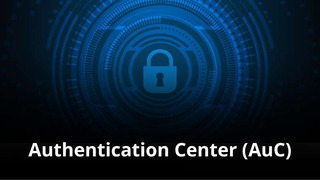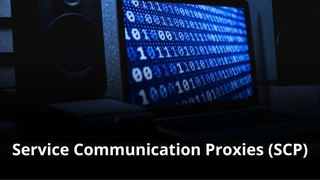Introduction about the Equipment Identity Register (EIR)
The Equipment Identity Register (EIR) is a critical and foundational component within the architecture of 2G and 3G Global System for Mobile Communications (GSM) networks. Understanding its purpose is essential for comprehending how legacy mobile systems managed security and prevented the use of stolen devices. This register acts as the central, authoritative database for the security status of all mobile equipment (handsets) used across the network. You will find it crucial for any operator aiming to uphold device security and combat mobile device theft and fraud.
What are the details of an Equipment Identity Register (EIR)?
- History and Evolution of the Equipment Identity Register
- Core Utility and Functionality of the EIR
- Technical Integration and Data Model
- EIR Ownership for MVNOs and IoT Companies
- Organizational Impact of EIR Ownership?
- Redundancy and High Availability
- Impact of 4G, 5G, and 6G on the EIR
- Frequently Asked Questions about the EIR
- Summary
History and Evolution of the Equipment Identity Register
The concept of a central device security database began with the inception of the GSM standard (2G). This standard introduced the Equipment Identity Register (EIR) as the primary system for managing the security status of mobile equipment. The EIR’s original design focused predominantly on supporting the core security service of blocking calls and services from devices reported as stolen. This reflected a major industry concern during the 2G era. As networks evolved into 3G (UMTS), the EIR remained a vital component, although its functionality and integration points with the newer packet core elements were adapted. Its architecture, however, remained geared towards traditional device security checks. The EIR’s function is conceptually carried forward in modern core networks, but often as a feature integrated into other security and access control elements rather than a standalone register.
Core Utility and Functionality of the EIR
What is the EIR Used For?
The Equipment Identity Register (EIR) is the definitive source for information regarding the security status of mobile devices within a 2G/3G mobile network. Its primary purpose is to hold the comprehensive list of device identities and their authorized status. These identities include the essential International Mobile Equipment Identity (IMEI). It is crucial for managing device security, ensuring that services are denied to stolen or unauthorized handsets. Deploying an EIR is necessary to ensure users cannot connect and receive services using a device that has been reported as lost or stolen.
Key Functions of the Equipment Identity Register
Investigate the core functions of the Equipment Identity Register (EIR) to understand its critical role in legacy network operations:
- Security Check: It verifies the status of a mobile device using its IMEI before allowing access to the network.
- Blacklisting: The EIR stores the IMEI of devices reported as stolen or lost, preventing them from accessing the network.
- Whitelisting: It stores the IMEI of authorized, valid equipment, ensuring they can be granted service access.
- Greylisting: The EIR can store IMEIs of devices that are being monitored or have technical issues, allowing restricted service.
- Fraud Prevention: It actively assists in combating mobile device fraud and theft by enforcing device barring.
- IMEI Status Storage: It maintains a permanent record of the security status for all mobile device identities.
- Status Query Response: The EIR provides a fast response to the Mobile Switching Center (MSC) on the device’s authorization status.
- Regulatory Compliance: It helps operators comply with regulations concerning the management of stolen devices.
- Database Management: The EIR allows for the creation, modification, and deletion of device security entitlements.
Technical Integration and Data Model
Integration with Other Systems
The Equipment Identity Register (EIR) does not operate in isolation; it is a centrally connected network element. Examine its key integration points to appreciate its centrality in 2G/3G security systems. It connects primarily to the Mobile Switching Center (MSC), which is the core element handling call setup and mobility management. The MSC queries the EIR when a device attempts to register or use services. It also interfaces with the Operation and Maintenance Center (OMC), which manages the population and updating of the various device status lists. Furthermore, the EIR is often integrated with Billing and Customer Care Systems where devices are reported as lost or stolen.

Technical Data Model and Key Interfaces
The Equipment Identity Register (EIR) employs a structured Technical Data Model. This model dictates how device identity and status data are efficiently organized and stored, facilitating fast security checks across the network. Key interfaces utilized by the EIR are predominantly based on the Signaling System 7 (SS7) protocol suite. Specific SS7 application parts utilized include:
- Mobile Application Part (MAP): This is used for communication with the MSC for the IMEI status checking procedure, generally occurring during the location update or call setup process.
- External Management Interfaces: These are often proprietary or based on standard database protocols for external operational system integration, allowing customer service to update the black list.
EIR Ownership for MVNOs and IoT Companies
Why Own an EIR?
For a Mobile Virtual Network Operator (MVNO) or an IoT company, owning a dedicated Equipment Identity Register (EIR) (or more commonly, utilizing an integrated EIR functionality) can be a strategic necessity. Consider that this register is the fundamental system for basic device security. Owning it allows these companies to gain significant control over the enforcement of device security, the quick barring of stolen equipment, and the customization of authorized device lists (e.g., only certain IoT devices). This level of control is not available when fully relying on the host network operator’s infrastructure for device security checks.
Advantages and Disadvantages of EIR Ownership for MVNOs/IoT Companies
Direct Control over device security policies and blacklisting.
Fast Provisioning and immediate barring of stolen devices.
Customized device authorization for specific IoT applications (Whitelisting).
Enhanced Fraud Prevention capabilities and device status visibility.
Potential Signaling Cost Savings by avoiding MNO per-transaction fees.
High Initial Investment in specialized core network hardware/software.
Operational Complexity requiring expertise in SS7/MAP signaling.
Maintenance and Upgrade Costs for a critical, 24/7 system.
Interconnection Challenges with the host MNO’s core infrastructure.
Legacy Technology Risk as the EIR’s function is often absorbed into modern elements.
Organizational Impact of EIR Ownership
Analyzing the organizational impact of owning an Equipment Identity Register (EIR) across various business units.
Operational Impact: Requires the establishment of a dedicated technical team proficient in SS7 signaling and security database operation. This team will monitor EIR performance, manage list updates, and handle all device security troubleshooting. Recruitment of specialized personnel with expertise in telecommunications security becomes essential.
Financial Impact: Evaluate the significant capital expenditure (CapEx) for the initial hardware and software purchase. There will also be high ongoing operational expenditure (OpEx) for power, cooling, maintenance contracts, and highly skilled staff salaries. Ownership converts a reliance fee into a managed asset cost.
Commercial Impact: Leverage the EIR for highly flexible and immediate control over device barring and authorization. This enables swift deployment of security policies. It supports faster security response than relying on a host MNO’s time-consuming processes.
Technical Impact: Mandates the implementation of detailed protocols for managing the device identity database integrity and security. The company must own the end-to-end responsibility for system stability, security patching, and ensuring correct interfacing with the MSC.
Redundancy and High Availability

The Equipment Identity Register (EIR) is a single, central point of failure for device security within the mobile network; therefore, Redundancy and High Availability (HA) are absolutely critical requirements. Implement a fully redundant system architecture, which is usually achieved through clustered databases or active-standby geographical setups. This design ensures service continuity and device security enforcement even during catastrophic site failure. Methods like hot standby or geographical redundancy configurations are standard practice. The system must also employ rigorous data synchronization mechanisms. These mechanisms guarantee that the primary and backup blacklists are continuously synchronized to prevent gaps in security. Ensure that automated failover procedures are in place to minimize any period where the network cannot verify a device’s security status.
Impact of 4G, 5G, and 6G on the EIR
EIR’s Transition
With the arrival of 4G (LTE), the dedicated Equipment Identity Register (EIR) was often conceptually absorbed into the security and policy enforcement functions of the new core network elements. While a standalone EIR may still exist for interworking with 2G and 3G, its core security check function is often integrated into the Mobility Management Entity (MME) and later the Access and Mobility Management Function (AMF) in 5G. Recognize that the EIR remains a backward-compatible component in modern telecom environments, especially where legacy device access is still supported.
5G and 6G Architecture
In the 5G core, the functionality has further evolved, with device access control and security checks being managed by a combination of the AMF and the Security Edge Protection Function (SEPF), alongside the overall policy management functions. The need to check a device’s validity remains. The concept will further evolve in 6G toward more distributed, cloud-native solutions, likely leveraging more advanced software-defined security and policy enforcement. However, the fundamental role of securely storing and managing the master device security status—the core function of the EIR—will always remain necessary, albeit implemented using advanced technologies.
Frequently Asked Questions about the Authentication Center
1. What is the main function of the EIR?
The primary function of the EIR is to check the security status of a mobile device (via its IMEI) and to deny service to blacklisted (stolen or lost) devices.
2. What is the IMEI?
The International Mobile Equipment Identity (IMEI) is a unique 15-digit number used to identify a specific mobile phone or device.
3. How does the EIR prevent a stolen phone from working?
When a stolen device attempts to register, the MSC queries the EIR, which responds with a “blacklisted” status, causing the MSC to deny all services to that IMEI.
4. What protocol is used for communication with the EIR?
The EIR primarily communicates using the Mobile Application Part (MAP), which is an application-layer protocol within the SS7 signaling suite, specifically for the device identity check procedure.
5. Is the EIR still necessary in a 5G network?
The dedicated EIR is not directly used in the native 5G core. Its function is taken over by other elements like the AMF and security functions, but it remains essential for supporting interworking with legacy 2G/3G networks.
Summary
The Equipment Identity Register (EIR) is the central, authoritative database that securely manages all permanent mobile device identity and security status information in 2G and 3G mobile core networks. Acquiring and operating an EIR, often as an integrated security feature today, offers MVNOs and IoT companies significant advantages in fraud prevention and direct device security management. However, this decision involves substantial capital expenditure and requires specialized SS7/MAP technical expertise. While the EIR is largely replaced by integrated security functions in 5G, its conceptual role—that of the master device security repository—remains fundamental to all generations of mobile communication.

























